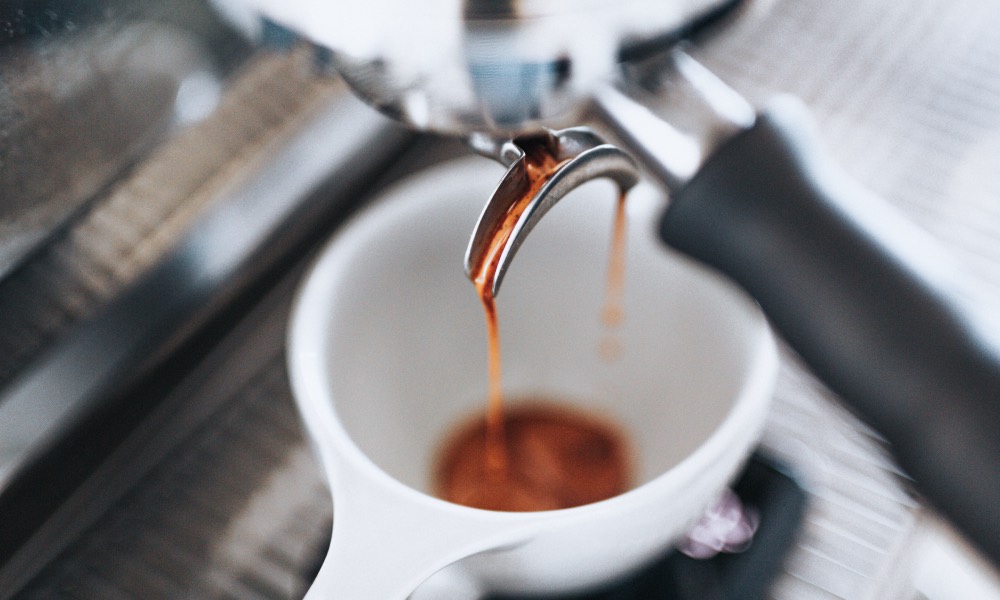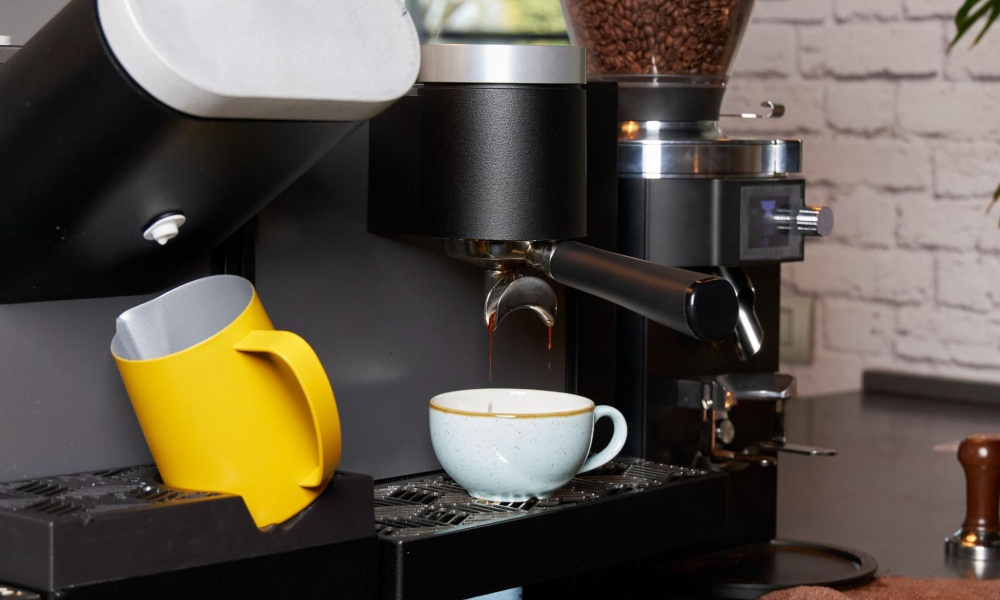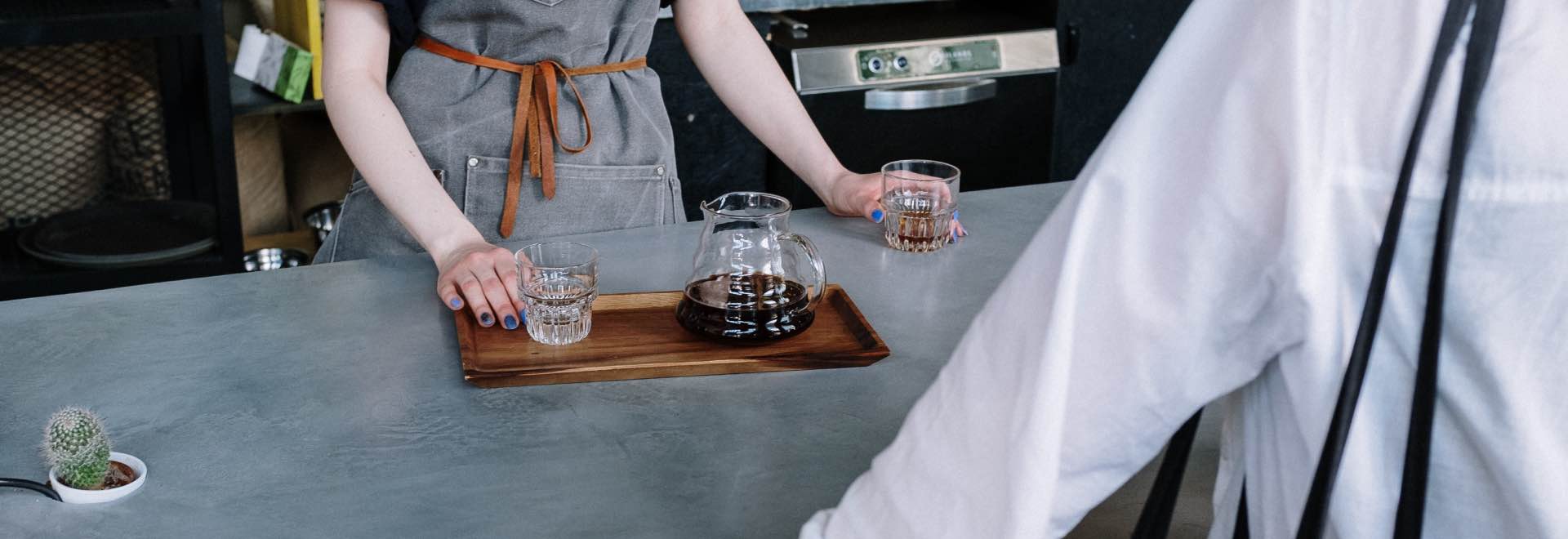Could espresso machines be used to brew something like filter coffee?
Matt Haw speaks to Alessandro Ceriani, a member of the R&D team at Heylo, to understand how modern espresso machines.
Filter coffee and espresso are two distinct drinks, with two different brewing techniques.
One is a modern, Italian invention that serves as the base of dozens of milk-based drinks, while the other is experiencing a renaissance with the rise of third-wave coffee.
The brewing principles are fundamentally the same: extract all the delicious flavour compounds contained within ground coffee while leaving undesirable flavour components behind. However, they are both very different in terms of concentration; flavour, volume, and appearance.
Espresso is brewed under pressure, which facilitates the rapid extraction of sugars, oils, and other soluble compounds from the coffee. In combination with hot water and finely ground coffee, espresso machines can produce rich, full-bodied coffee topped with a layer of crema.
Typical espresso doses around 18g ground coffee to yield 30 – 40g of liquid – a brew ratio between 1:2 and 1:3. While filter coffee uses much more water – usually with a brew ratio of 1:16 to 1:17. Despite the contrasting volumes of water used for each method, they extract roughly the same amount of solubles.
Therefore, when filter coffee is described as less “strong” than espresso, this is referring to the concentration, texture and bold flavours of the drink, rather than the amount of dissolved material in the cup.
Filter coffee allows more delicate fruit and floral flavours to come through the cup; flavours that can be difficult to perceive in espresso. For coffee with lots of sweet, bright flavours, filter brewing might be more suitable.
Despite the fact that these two brewing methods are fundamentally different, some in the industry are recreating the conditions needed to brew filter coffee with an espresso machine.

Espresso machines are not built for filter coffee
Espresso machines have the basic components needed to brew filter coffee: hot water, a spray head, a filter basket, and, increasingly, automated dosing.
However, these machines are designed to brew at high pressures – usually at around nine bars. This is the first obstacle for brewing filter coffee, which is normally brewed at atmospheric pressure – one bar.
As well as pressure, we also need to consider flow rate: the speed at which water passes through the group head. Generally speaking, the greater the pressure, the higher the flow rate. An ideal flow rate for espresso is between 200g and 280g per 30 seconds.
In filter brewing, flow is dictated by the speed at which water is poured over the coffee bed. For instance, a three-minute brew using 500 grams of water would result in a slower average flow rate of 83 grams per 30 seconds. This variance in flow rate leads to a difference in brew times.
Ultimately, espresso machines are designed to create high pressures for water to extract flavour compounds from finely ground coffee over a short period of time; while filter coffee extracts coarser grinds at atmospheric pressure over a longer time period.
Put simply, espresso machines have not been designed to brew filter coffee.
Some modern machines have started to incorporate pressure, flow, and temperature profiling. Until recently, this technology was being applied to perfecting espresso extraction – it did not have the capability to extend to filter brewing.

New technology offers more control over the brewing process
Alessandro Ceriani is a member of the Research and Development team at Heylo. He explains that the Heylo Coffee Module uses induction technology to address the issues that come with traditional boiler technology. With induction heating, total control over pressure, flow rate, and water temperature is achievable.
With this newfound control, Heylo has been able to develop a filter coffee recipe using the espresso module – as the machine’s boilerless technology means it is capable of brewing at low pressures.
“Using a preset flow and a dedicated particle size we can simulate an extraction like filter coffee,” Alessandro explains.
Due to the control over flow rate, the machine can produce a 150ml dose of filter coffee, brewed at very low pressures. Once pre-programmed, every subsequent cup will be consistent and simple – leaving the barista to focus on grind size.
While this is currently barely even an emerging school of coffee preparation, if scaled up it could have serious implications for the coffee industry.
Brewing pour-over coffee remains a highly desirable skill, one that takes time and training to perfect. But at the same time, it can also slow down service – brew bars are often a pressure point for coffee shops.
The ability to brew filter coffee with an espresso machine could relieve baristas of a timely task and keep service moving while freeing up staff to focus on customer service – a part of the job that is becoming increasingly valued.
Plus, for baristas to be able to switch seamlessly between espresso and filter within the same workstation could increase efficiency. One of the most cited limitations on efficiency within a coffee shop is workflow – having everything the barista needs in close proximity and in a logical position is crucial to an effective station. Brewing filter coffee on the same machine as espresso could be transformational for coffee shop productivity.
Moreover, without the need for a dedicated brew bar, smaller cafés and start-ups – which often don’t have the space and resources of more established shops – would be able to offer both filter and espresso.
While unlikely, should this innovation become scalable and therefore more commonplace, it could be revolutionary for the coffee industry. While still more of an experiment than anything else, bringing two historically different brewing techniques together with one machine could overhaul coffee shop workflow entirely.








